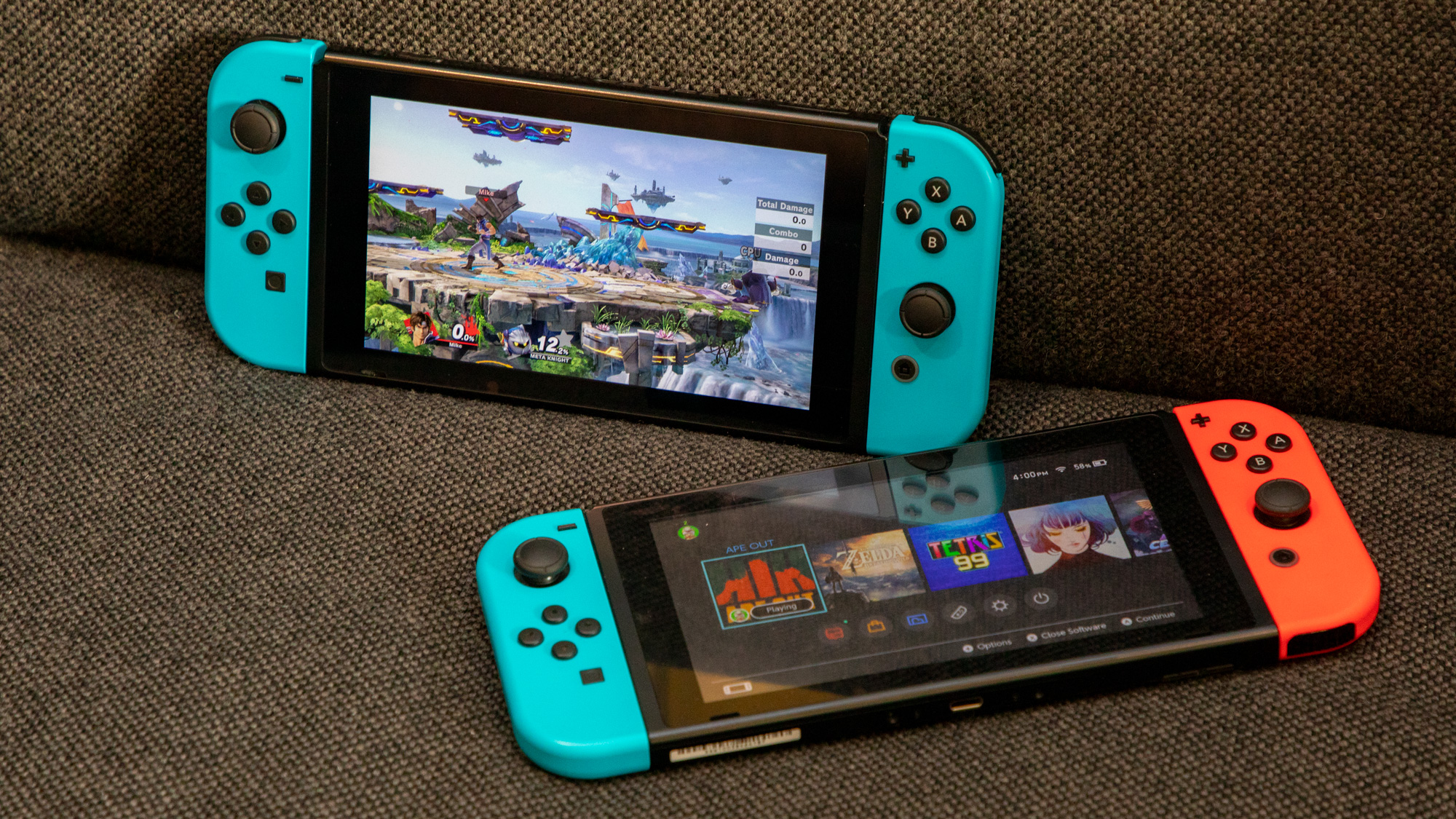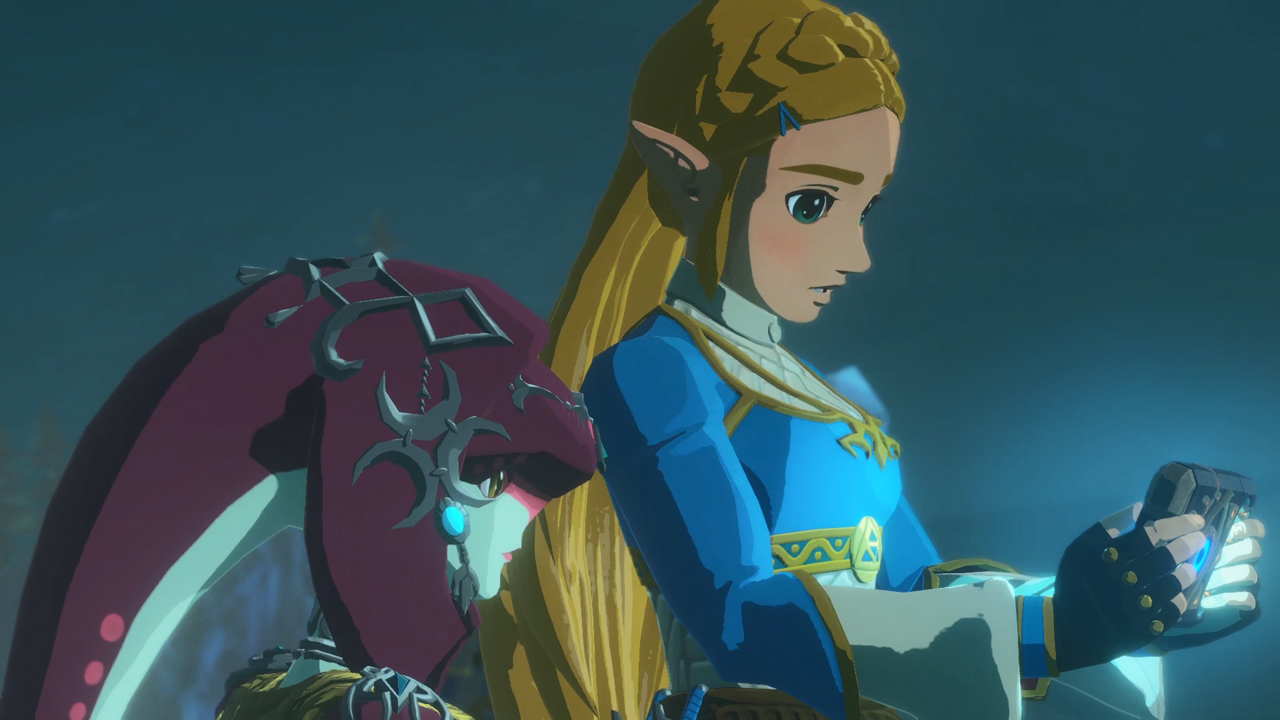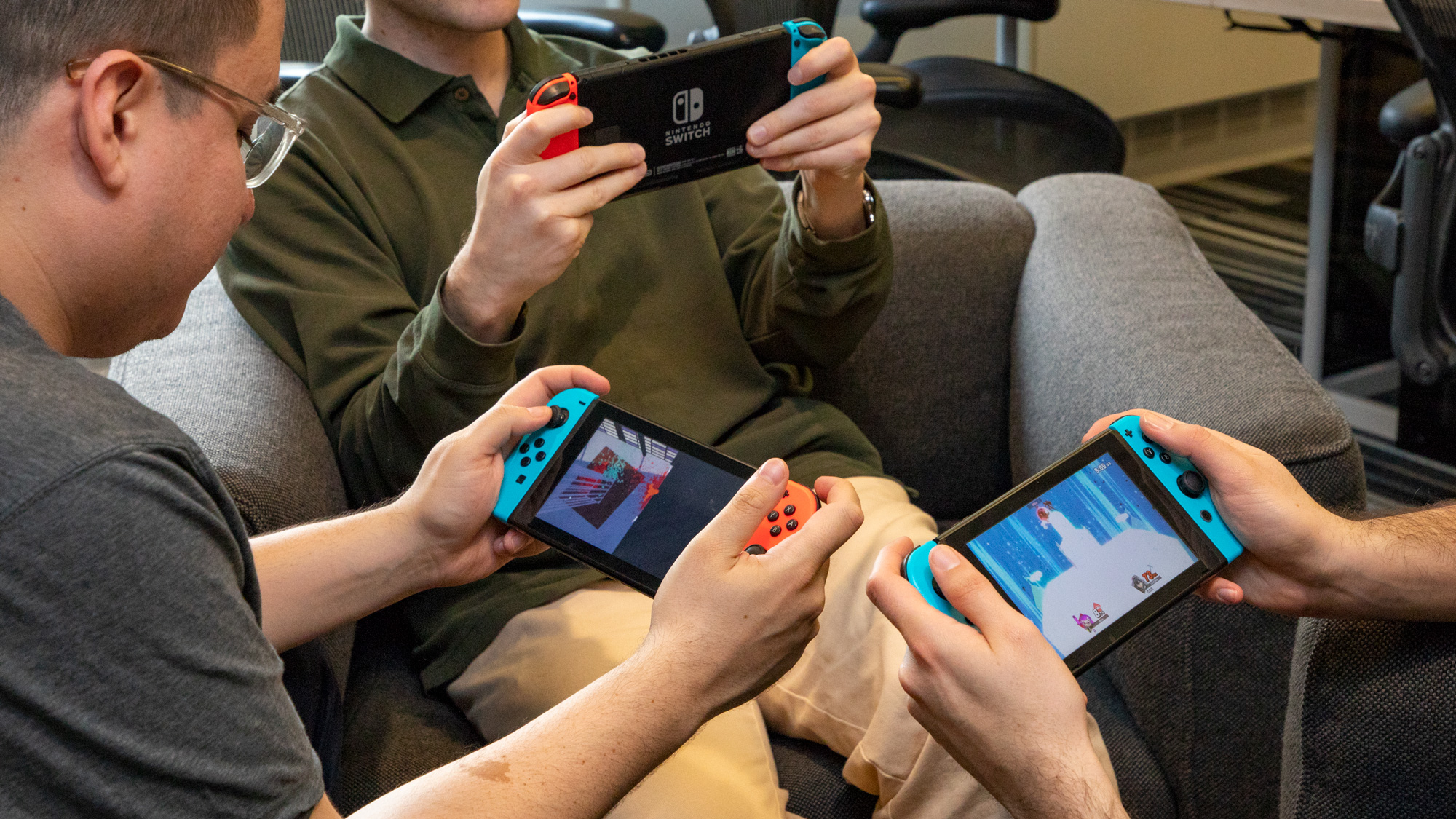Nintendo Switch Pro: Why we need a 4K Switch
The Nintendo Switch could use a graphical upgrade

The PS5 and Xbox Series X may be the hot new consoles in town, but I spent most of my recent holiday break primarily playing the Nintendo Switch. I imagine many other gamers did the same, and it’s not hard to see why.
The Switch has a bevy of fantastic games you can’t get anywhere else, including the meaty Hyrule Warriors: Age of Calamity, which I had been eagerly awaiting ever since its surprise announcement earlier this year. I downloaded the game, booted it up — and promptly wondered why it looked so bad.
- Play the best Nintendo Switch games
- Try the best Nintendo Switch accessories
For some context: I’ve been pretty busy with the PS5 and the Xbox Series X ever since I received them for review back in early November. Some games I played for review; some games I simply wanted to play.
Either way, my Switch sat neglected in front of my TV for almost two months. When I finally turned it on again, I was not at all ready for the significant drop in graphical fidelity.

On resolution and frame rate
I tested the PS5 and the Xbox Series X on a gorgeous LG CX OLED TV, which supports 4K resolution and up to 120 frames per second. While most games don’t achieve this (4K at 30 fps, or upscaled 4K at 60 fps is about the best you’re going to do), they still look fantastic and miles ahead of the 1080p/30 fps games of the previous console generation.
Granted, the Nintendo Switch was never a technical powerhouse. Its best-looking games have accomplished a lot by prioritizing memorable art styles over graphical prowess.
The Legend of Zelda: Breath of the Wild, for example, has much more memorable visuals than the latest Call of Duty, whatever their resolutions and frame rates may be. But after marveling at the expansive landscapes in Assassin’s Creed Valhalla, it was tough to go back to the relatively simplistic, constrained levels in Age of Calamity.
Sign up to get the BEST of Tom's Guide direct to your inbox.
Get instant access to breaking news, the hottest reviews, great deals and helpful tips.
At first, I reasoned that the LG CX OLED might help me alleviate the Switch’s relatively low frame rate. I hunted for the TruMotion setting and turned it on.
For those who aren’t familiar with it, TruMotion produces what our senior editor Brian Westover calls the “soap-opera effect” for movies and TV, artificially boosting the frame rate through visual trickery. (Other TV brands have similar features, although the names vary.)
While this setting generally makes TV shows and movies look terrible, I reasoned that it might be helpful for video games, where high frame rates are often more useful than perfect visual fidelity.
At first, the setting did what I wanted it to do, making Link appear to swing his sword and blaze through the battlefield faster and more fluidly than before. But it wasn’t long before I started to notice the cracks.
TruMotion can’t actually create more frames per second than the source game; it can only trick your eye into thinking it does. As such, the effect had an artificial quality that was especially jarring when the frame rate would stutter and drop every minute or so. Before I reached the end of the first level, TruMotion had to go.
In the end, I had no choice but to let my eyes adjust to Age of Calamity’s default visuals — or play in handheld mode, where they were a little more tolerable. But then I ran into framerate issues and had to squint at the tiny text and mission objectives.

Will we get a 4K Switch?
In Age of Calamity’s defense, it’s actually quite a good game, incorporating much of what I loved about Breath of the Wild into the fast-paced and energetic Dynasty Warriors formula. Once I got used to the resolution and frame rate, it didn’t look bad, either, thanks to its colorful environments and distinctive character designs.
But there was a distinct sense that the Switch — which, according to Nintendo, is only halfway through its intended lifespan — can no longer provide the kind of visuals that console gamers want.
While visuals aren’t as important as gameplay, story and a host of other features, they can make a huge difference in immersion. Additionally, a higher frame rate isn’t just for show; it can be a gameplay benefit, particularly in competitive multiplayer titles.
Before I got a 4K TV, I was skeptical of the claims that we needed a 4K Switch. Now, I think we need one sooner rather than later.
While most Americans still own 1080p (or lower) TVs, that’s changing rapidly, and two out of three console manufacturers can now take full advantage of 4K technology. If we have to wait another three years for a 4K Switch successor, TV technology itself may have already advanced by that point, leaving Nintendo to play catchup again.
This week, there’s been more buzz than usual about a “Switch Pro,” “Switch 2,” or whatever you want to call it. The bottom line is that rumors have been swirling about Nintendo developing a 4K Switch and releasing it as early as this year.
Generally speaking, I don’t trust Nintendo rumors and this batch is no exception. The sources are hazy and seem to involve more wishful thinking than hard evidence. But sometimes these rumors can be revealing as they shed light on what the rumormongers wish we had in a current Nintendo device.
Some of the Switch Pro’s prospective features include better hardware, more storage and 4K support — even if the new console has to drop its beloved handheld mode in order to get it.
In the end, I accepted Age of Calamity for what it is, and I’m sure I’ll do the same with the next Switch title I pick up. But the PS5 and the Xbox Series X have set new standards in how console games should look, and Nintendo would be wise to follow suit in some capacity.
We may not remember great games primarily for how they looked, but in the moment, stunning graphics can make a huge difference.
Marshall Honorof is a senior editor for Tom's Guide, overseeing the site's coverage of gaming hardware and software. He comes from a science writing background, having studied paleomammalogy, biological anthropology, and the history of science and technology. After hours, you can find him practicing taekwondo or doing deep dives on classic sci-fi.

